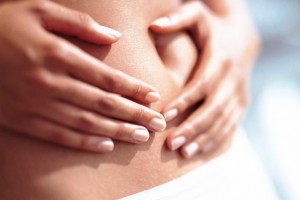Abdominal Diastasis Post-Natal Physiotherapy Treatment and Rehabiliation at your Home in London or at our Practices in Moorgate Monument EC3, Belgravia Westminster SW1 or Clapham SW4. Abdominal Diastasis Recti Treatment Using Hypopressive Method and Pilates
Physiotherapists in London Specialized in Abdominal Diastasis Recti Post-Natal Treatment (Abdominal Separation)
Diastasis recti is the separation of the large parallel bands of muscles that meet in the middle of the abdomen during pregnancy. Diastasis recti is caused by the uterus growing and stretching the muscles in the abdomen. It may appear as a bulge in the middle of the abdomen or it might be noticeable only when the abdominal muscles are tense, for example when you do a stomach crunch. The condition responds extremely well to physiotherapy treatments.
Mummy’s Physio London works with specialist post-natal physiotherapists who have years of experience in women’s health conditions to ensure you recover from abdominal diastasis recti in the safest and most effective way. The Hypopressive Method used allows you to work on the abdominal muscles without putting any pressure on the pelvic floor, and the method provides fantastic results. Our physiotherapists are highly trained in their areas of expertise and are well recommended due to their professional and gentle manner. Should you wish to compliment your treatment with a Pilates course, our instructor specialises in abdominal rehabilitation and toning.
If you are an Axa or Bupa patient, you cannot book online. Please call our office with your authorisation number.
If you cannot find an appointment that suits you, call us or send us a message: we will do our best to find you a slot.
Abdominal Diastasis Recti Physiotherapy Treatment and Rehabilitation at your home or at our practices in Moorgate Monument EC3, Belgravia Westminster SW1 or Clapham SW4
It can be difficult getting around London after your pregnancy, that’s why Mummy’s Physio offers appointments at your home for your convenience. However, we also offer treatment at any of our practices: the Light Centre Belgravia SW1 in Westminster, near Victoria station, the Light Centre Monument EC3 between London Bridge and Bank Stations and our practices in Clapham SW4 between Clapham South and Clapham Common stations.
Mummy’s Physio London are covered by health insurance companies and recognized by BUPA and AXA PPP.
To book treatment with our diastasis specialist call us on 0207 125 0262 / 0782 455 3765
More information about Abdominal Diastasis Recti treatment in London (Abdominal Separation)
How our specialised women’s health physiotherapists in London treat diastasis recti?
Our specialist post-natal physiotherapists in London use the most efficient and safe technique to treat abdominal diastasis recti, the Hypopressive Method. This revolutionary technique allows you to work on the abdominal muscles without putting any pressure on the pelvic floor, which might also be damaged or weak after the pregnancy and delivery. You will also be prescribed additional exercises you can perform on your own in between sessions. As an additional step towards your recovery from diastasis recti, we also offer postnatal Pilates sessions with our Pilates instructor. Pilates will help you to flatten and tone your stomach while treating your diastasis and our Pilates instructor will create a custom training programme specifically tailored for your needs.
Reminder: You need to wait 6 to 8 weeks post-delivery before going back to exercise and then only if your perineum is strong enough. Not following this advice might lead to incontinence, back pain and diastasis issues.
More information about diastasis Recti (Abdominal Separation)
What is Abdominal Diastasis Recti?
Diastasis recti is the separation of the large parallel bands of muscles that meet in the middle of the abdomen during pregnancy. Diastasis recti is caused by the growing uterus stretching the muscles in the abdomen. It may appear as a bulge in the middle of the abdomen, or it might be noticeable only when the abdominal muscles are tense, for example when you do a stomach crunch.
The muscle separation occurs during the second or third trimester of the pregnancy and in most women it usually lessens naturally in the six to twelve months following childbirth, however separation in a previous pregnancy significantly increases the probability and severity of the condition in subsequent pregnancies. If the separation remains or worsens during the twelve months following birth, it will cause lower back pain and can also worsen pelvic instability. This can make it difficult performing every day activities, such as lifting heavy objects or even walking up the stairs.
When does diastasis recti occur?
You are more likely to develop the condition as a result of your pregnancy if you are over 35, this is your second or third pregnancy, or you have a multiple pregnancy. There is also increased risk of the condition should you give birth to a very heavy baby, you have a pronounced sway in your back or you have had separation or incontinence issues during a previous pregnancy. As mentioned, the condition can also occur if you start exercising too soon after giving birth.
If you are an Axa or Bupa patient, you cannot book online. Please call our office with your authorisation number.
If you cannot find an appointment that suits you, call us or send us a message: we will do our best to find you a slot.





